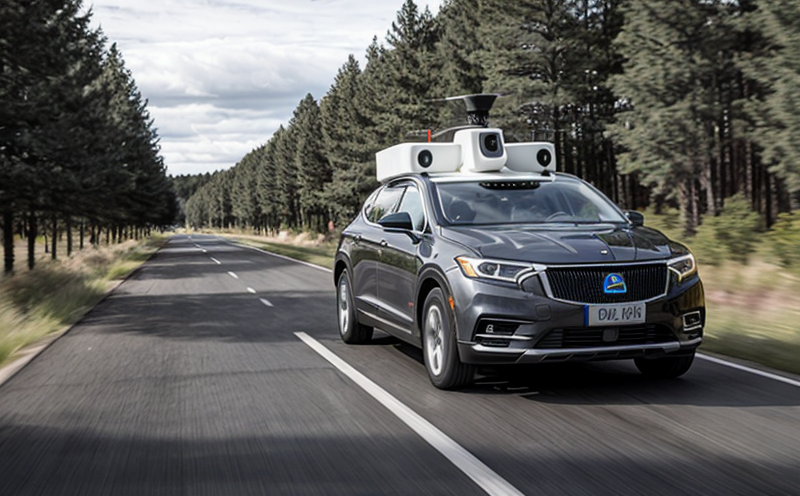SAE J3131 Vehicle Motion Control for Autonomous Driving Systems
The SAE J3131 standard is pivotal in ensuring that autonomous driving systems can achieve robust and reliable vehicle motion control. This standard provides a comprehensive framework for testing the performance of autonomous vehicles under various conditions, focusing on critical parameters such as steering angles, acceleration rates, deceleration capabilities, and overall stability.
SAE J3131 emphasizes the importance of replicating real-world driving scenarios to accurately assess how autonomous systems handle complex road conditions. The standard covers a wide range of test cases, including but not limited to lane changes, emergency braking situations, merging into traffic, and navigating through pedestrian zones. By adhering to this standard, manufacturers can demonstrate compliance with regulatory requirements and enhance the safety and reliability of their autonomous driving technologies.
The testing process outlined in SAE J3131 involves a series of rigorous tests designed to evaluate the vehicle's ability to maintain control under different conditions. These tests simulate various environmental factors such as weather, road surface variations, and traffic density, which can significantly impact the performance of autonomous systems. The standard also addresses the integration of sensors and other components that contribute to the overall motion control system.
One of the key aspects of SAE J3131 is its emphasis on repeatability and reproducibility in testing. This ensures that the results obtained from these tests are consistent and reliable across different test environments and conditions. The standard provides detailed guidelines for setting up test tracks, selecting appropriate test vehicles, configuring sensor systems, and conducting trials under controlled conditions.
The SAE J3131 framework also includes provisions for assessing the vehicle's response time to various stimuli. This is crucial in ensuring that autonomous systems can react promptly and safely in critical situations. The standard sets specific thresholds for acceptable response times, which must be met by the tested systems. By adhering to these requirements, manufacturers can ensure that their autonomous vehicles are capable of making timely decisions and executing appropriate actions.
The testing process outlined in SAE J3131 is designed to provide a holistic evaluation of the vehicle's motion control system. This includes assessing not only the mechanical aspects but also the software algorithms that govern the vehicle's behavior. The standard emphasizes the importance of integrating hardware and software components seamlessly to achieve optimal performance.
By following SAE J3131, manufacturers can ensure that their autonomous driving systems meet rigorous safety standards and perform reliably in real-world conditions. This standard plays a crucial role in fostering innovation and trust within the industry, enabling the widespread adoption of autonomous vehicles.
Industry Applications
- Testing of autonomous vehicles for commercial applications such as delivery drones or last-mile logistics.
- Evaluation of emergency response scenarios involving autonomous ambulances and fire trucks.
- Assessment of autonomous farming equipment for enhanced precision and efficiency in agricultural operations.
- Verification of autonomous public transport systems, including buses and trains, to ensure safe and reliable operation.
Environmental and Sustainability Contributions
The SAE J3131 standard plays a significant role in promoting environmental sustainability by ensuring that autonomous driving systems can operate efficiently and safely under various conditions. By adhering to this standard, manufacturers can minimize fuel consumption and reduce emissions, contributing to a greener transportation ecosystem.
Through rigorous testing of vehicle motion control, SAE J3131 helps identify inefficiencies and optimize energy usage in autonomous vehicles. This not only benefits the environment but also enhances the overall performance and cost-effectiveness of these systems.
Competitive Advantage and Market Impact
The implementation of SAE J3131 provides a competitive edge for manufacturers by ensuring that their autonomous driving systems meet the highest standards of safety and reliability. This standardization fosters trust among consumers, regulatory bodies, and other industry stakeholders.
Adhering to SAE J3131 can lead to enhanced market penetration as it demonstrates a commitment to innovation and quality. Manufacturers who comply with this standard are better positioned to meet evolving regulatory requirements and stay ahead of competitors in the rapidly expanding autonomous vehicle market.





